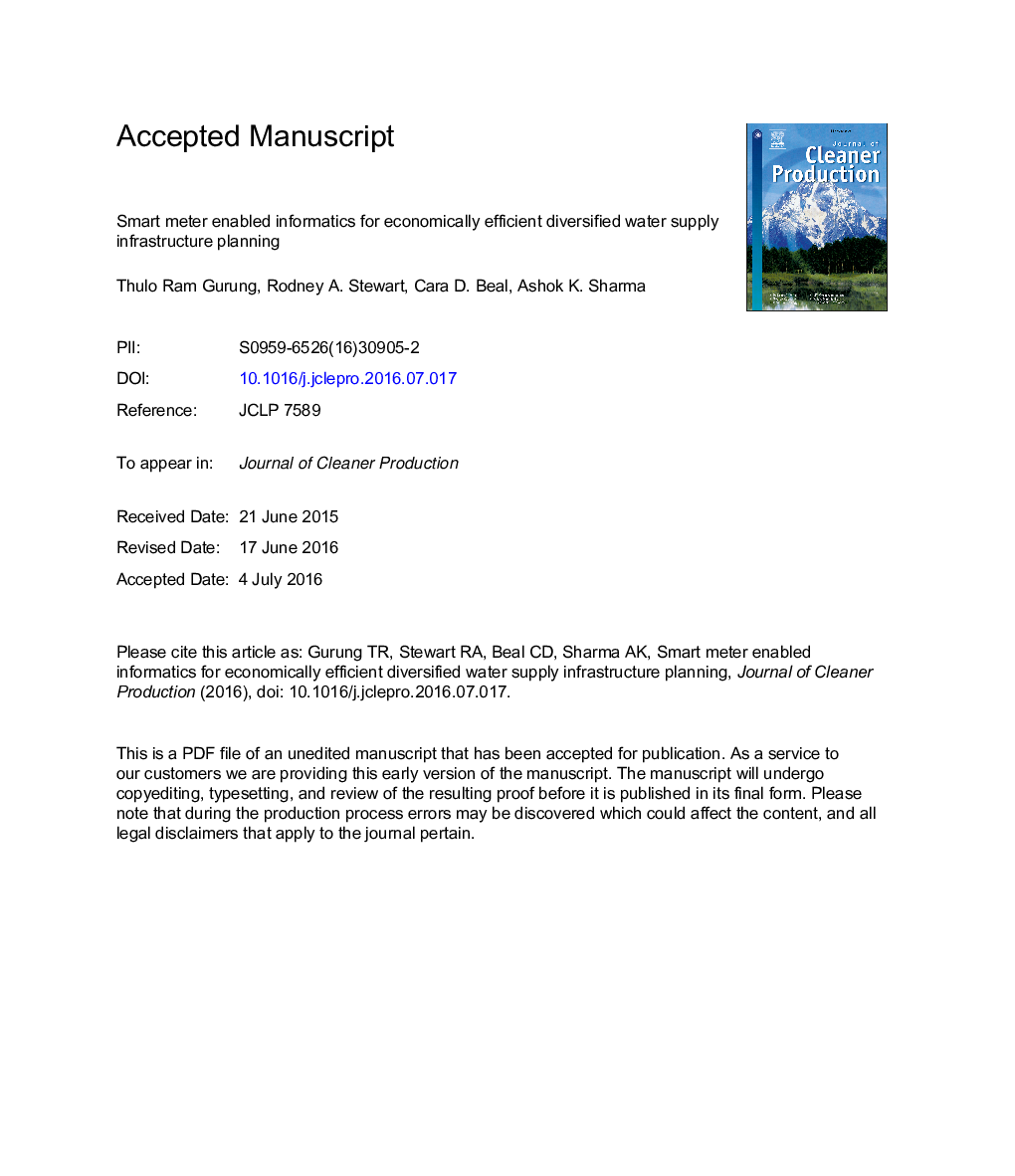| Article ID | Journal | Published Year | Pages | File Type |
|---|---|---|---|---|
| 8101368 | Journal of Cleaner Production | 2016 | 24 Pages |
Abstract
Water efficiency measures and alternative supply sources alleviate peak water demand on urban water supply networks. Consequently, they also provide benefits to water service providers, in terms of augmentation deferrals and reduced sized infrastructure. However, while these benefits are acknowledged in the literature, they have not been thoroughly investigated and quantified. This paper empirically demonstrates how the installation of different potable water saving measures would affect the design of urban water supply networks. Peak day water demand profiles were developed for the baseline scenario, which represented the typical building code mandated for new dwellings constructed in Queensland, Australia, and for households fitted with water saving measures. The core novel feature of this study relates to the use of an innovative bottom-up approach to the development of demand profiles based on smart meters enabling comprehensive water end use datasets (i.e. demand in shower, tap, etc.) to be obtained. Hydraulic model runs were conducted for various water savings scenarios across different planning horizons to determine the scheduling of augmentations in a water supply study area. The results of the model runs showed deferred and eliminated augmentations, as well as reductions in infrastructure sizing for the water savings scenarios compared to the baseline scenario. Financial analysis (i.e. NPV) on trunk main augmentation requirements over 50 year asset life cycles indicated that savings of between $1,574,289 (11.4%) and $7,030,796 (51%) could be achieved by incorporating water efficiency and potable source substitution measures in new infill developments in the study region.
Keywords
Related Topics
Physical Sciences and Engineering
Energy
Renewable Energy, Sustainability and the Environment
Authors
Thulo Ram Gurung, Rodney A. Stewart, Cara D. Beal, Ashok K. Sharma,
